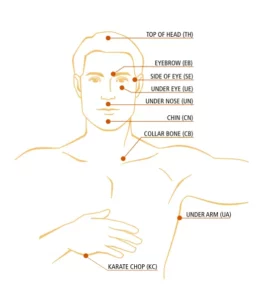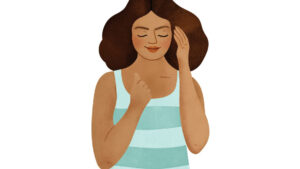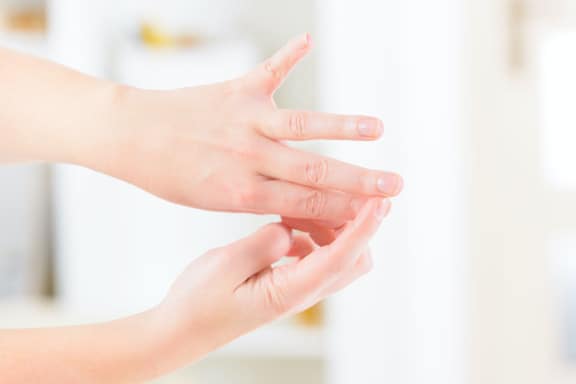If you’re looking for a new way to heal your mind and body, tapping therapy may be the answer for you! Tapping therapy is a relatively new technique that is gaining in popularity. It involves tapping on specific points on your body while focusing on your problem or issue. This can help to release negative emotions and allow you to feel better. In this blog post, we will discuss the benefits of tapping therapy and how it can help you achieve better health and well-being!
Contents
Defining Tapping Therapy
Tapping therapy, also known as EFT (Emotional Freedom Technique), is a form of psychological acupressure. It was developed in the 1970s by Roger Callahan, an American psychologist. Tapping therapy is based on the idea that our bodies have energy meridians that can become blocked. This can lead to physical and emotional problems. By tapping on specific points in the body, we can release these blockages and achieve better health and well-being.
It is believed that tapping therapy shares some similarities with acupuncture. Both therapies are based on the idea of energy meridians and both involve tapping on specific points in the body. However, there are some key differences between these two therapies. Acupuncture is a more invasive procedure that involves the insertion of needles into the skin. Tapping therapy is a non-invasive technique that does not require the use of needles.
How Does Tapping Therapy Work?

Tapping therapy can be used to treat a wide variety of physical and emotional problems. The therapist will start by asking you to focus on your problem or issue. Once you have focused on your issue, the therapist will then tap on specific points on your body. The therapist will usually tap on specific points in the following order:
- The top of the head
- The eyebrows
- Under the eyes
- The side of the eyes
- On the collarbone
- Under the nose
- On the chin
- On the side of the body (just below the armpit)
As you tap on each point, you will focus on your problem or issue. You may also be asked to repeat certain phrases, such as “I release this negativity” or “I am worthy of love and happiness.” The tapping process can last for several minutes or longer, depending on your needs. After you have finished tapping, you should feel more relaxed and at ease.
Additionally, it is important to note that tapping therapy can be done on your own. If you are interested in trying this technique, there are many resources available online that can help you get started.
The 5 Steps of Tapping Therapy
Now that we have covered the basics of tapping therapy, let’s take a more in-depth look at the process. There are five steps involved in tapping therapy:
- Step One: Identify the Problem
The first step is to identify the problem or issue that you want to address. This can be anything from stress and anxiety to chronic pain or relationship problems. Once you have identified your problem, it is important to focus on it. Try to think about how your problem makes you feel and what kinds of thoughts go through your mind when you think about it. It may also be helpful to write down your thoughts and feelings about your problem.
- Step Two: Create a Positive Statement
The next step is to create a positive statement about yourself. This statement should be something that you can believe, even if it is just for the moment. For example, you might say “Even though I have this problem, I am still a good person.” The goal of this step is to help you start thinking more positively about yourself and your situation.
- Step Three: Tap on the Points
Once you have identified your problem and created a positive statement, it’s time to start tapping! As we mentioned earlier, there are specific points on your body that you will need to tap. These points are located on the top of the head, eyebrows, under the eyes, sides of the eyes, collarbone, under the nose, chin, and just below the armpit.
As you tap on each point, focus on your problem and repeat your positive statement. For example, you might say “Even though I have this problem, I am still a good person” as you tap on the top of your head. You can tap with either hand, but it is often easiest to use your dominant hand.
- Step Four: Breathe
After you have finished tapping on all of the points, it’s important to take a deep breath and relax. Try to focus on how you are feeling in the moment. Do you feel any different than when you started? Are your thoughts about your problem different? Just take a few moments to notice any changes that have occurred.
- Step Five: Repeat
The final step is to repeat the process as needed. You may find that you need to tap on certain points multiple times or for a longer period of time. You may also find that you need to tap on different points as your problem changes. Just listen to your body and trust your intuition.
Tapping therapy is a relatively new technique, but it is one that shows great promise. If you are struggling with a physical or emotional problem, it may be worth giving tapping therapy a try. With a little practice, tapping can be an effective way to help you heal both physically and emotionally.
Who Should Avoid Tapping Therapy?
Tapping therapy is generally considered to be safe for most people. However, there are a few groups of people who should avoid this technique. These groups include:
- People who have a history of seizures
- Pregnant or breastfeeding
- Cancer patients
- People with bleeding disorders
- People with pacemakers or other electrical implants
If you fall into one of these categories, it is important to speak with your doctor before starting tapping therapy.
Benefits

There are a number of potential benefits of tapping therapy. These benefits include:
- Reducing stress and anxiety
- Improving sleep quality
- Increasing energy levels
- Improving mood
- Decreasing negative thinking
- Reducing cravings and addictive behaviors
- Relieving pain
Tapping therapy has been shown to be an effective treatment for a variety of conditions, including:
- Anxiety
- Depression
- Insomnia
- Stress
- PTSD (post-traumatic stress disorder)
- Addictions
- Eating disorders
- Migraines
- Chronic pain
Tapping therapy is a safe and effective treatment for many conditions. It is a relatively new technique, but it is quickly gaining popularity due to its many potential benefits. If you are looking for a new way to improve your health and well-being, tapping therapy may be the answer for you!
Drawbacks
Although tapping therapy is a safe and effective treatment for many conditions, there are some potential drawbacks to consider. These drawbacks include:
- Lack of scientific evidence: There is currently a lack of scientific evidence to support the claims made about tapping therapy. More research is needed to determine whether or not it is truly effective.
- The cost: It can be an expensive process, depending on the therapist you see. Some therapists may charge by the session, while others may charge by the month.
- The time commitment: Tapping therapy usually requires multiple sessions in order to be effective. This can be time-consuming and may not be feasible for everyone.
- It’s not always easy to find a qualified practitioner: Tapping therapy is still a relatively new technique, which means it can be difficult to find a qualified practitioner in your area.
- Potential side effects: Although rare, there are some potential side effects associated with tapping therapy, such as dizziness, nausea, and headache.
Tapping therapy is a new and relatively unknown treatment option. As such, there is a lack of scientific evidence to support its claims. However, many people have found it to be an effective treatment for a variety of conditions. If you are considering tapping therapy, it is important to weigh the potential benefits and drawbacks before making a decision.
Finding The Right Therapist

If you are interested in tapping therapy, it is important to find a qualified therapist. Tapping therapists can be found online or through word-of-mouth. Once you have found a potential therapist, be sure to ask about their qualifications and experience. Some questions you may ask include:
- How long have you been practicing tapping therapy?
- What is your success rate with patients?
- Do you have any experience treating my specific condition?
- What are the potential risks and side effects associated with tapping therapy?
Be sure to ask as many questions as possible in order to make an informed decision about whether or not tapping therapy is right for you.
It is also important to make sure that you feel comfortable with your therapist. Tapping therapy can be a deeply personal experience, so it is important that you feel safe and comfortable with your therapist.
If you are considering tapping therapy, be sure to do your research and find a qualified therapist who you feel comfortable with. Tapping therapy has the potential to be a life-changing treatment option for many conditions.
Other Natural Alternatives
Just like tapping therapy, there are a number of other natural alternatives that you may want to consider. Some of these alternatives include:
- Acupuncture: Acupuncture is a traditional Chinese medicine technique that involves inserting thin needles into the skin.
- Yoga: Yoga is an ancient practice that combines physical and mental exercises.
- Meditation: Meditation is a practice that allows you to focus and quiet your mind. It can be done in a variety of ways, such as sitting still or walking.
- Aromatherapy: Aromatherapy is the use of essential oils to improve physical and emotional well-being.
- Biofeedback: Biofeedback is a technique that uses sensors to monitor the body’s response to stress.
- Hypnosis: Hypnosis is a state of relaxation and focused attention. It can be used to treat a variety of conditions, such as anxiety and stress.
These are just a few of the many natural alternatives that you may want to consider. If you are looking for a new way to improve your health and well-being, be sure to explore all of your options before making a decision.
Conclusion
Tapping therapy is a new and relatively unknown treatment option. However, many people have found it to be an effective treatment for a variety of conditions. If you are considering this approach to therapy, it is important to weigh the potential benefits and drawbacks before making a decision. Other natural alternatives are also available and may be worth considering. Speak with your doctor or a qualified healthcare practitioner to learn more about your treatment options.
If you are looking for experienced, qualified, and affordable therapists, contact Mantra Care. We have a team of mental health professionals from all across the world providing confidential and effective therapy services. You can visit our website to learn more. You may also give us a call to book a therapy session or download our free Android or iOS app for more information!


